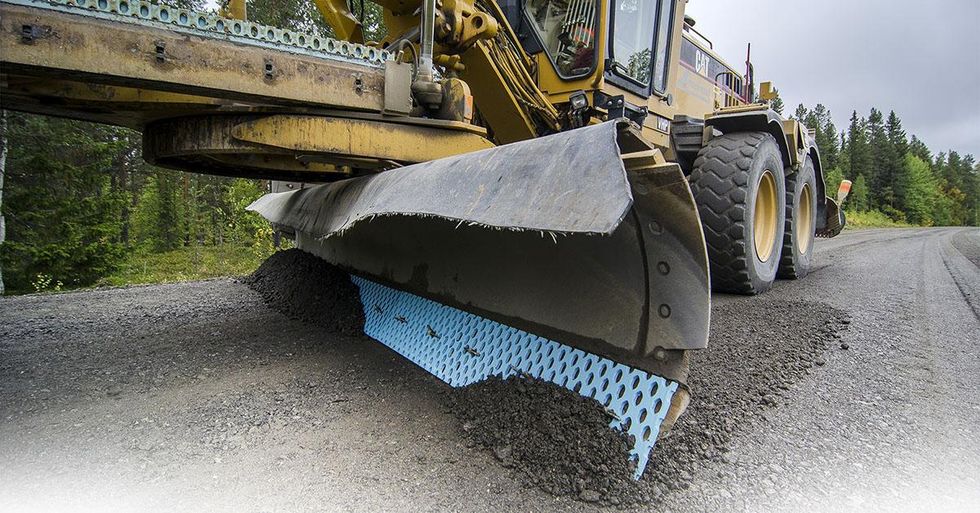.
Whether you are looking for a replacement grader blade or just getting ready to replace the ones you have, you want to ensure you are getting the right ones for the job. There are several factors to consider, such as thickness, width, and the angle at which they will be operated.
Types of Grader Blades
Depending on the terrain and the application, there are different types of Replacement Grader Blades that you can use. Selecting the right grader blade can increase productivity and minimize downtime. However, you must first understand what each blade is used for and how it performs.
Grader blades redistribute gravel and sub-base material, flatten surfaces, and even out driving routes. They are available in single-bevel, double-bevel, and in curved configurations. Each blade style is better suited for certain applications, so you must consider your specific needs before choosing.
When working in hard terrain, wear-resistant grader blades are imperative. However, these blades must be installed properly and used at the correct angle. If not, they could damage the grader's blade and other Heavy Equipment Wear Parts.
Thickness
Choosing the right grader blades can increase your equipment's life and reduce maintenance costs. This can also increase your crew's productivity, reducing fuel consumption and machine downtime. Here are some of the features to look for.
First, consider the width. Generally, grader blades are available in six-foot and eight-foot lengths. However, for specific applications, custom widths are available. This allows you to have the right part for the right price.
Second, consider the blade's cutting edge. This can vary from flat to curved. A curved cutting edge is more effective at breaking through ice and snow. It also can penetrate soft ground materials, such as dirt, with little to no downward pressure.
Third, you should consider the hardness and impact resistance of the blade. Harder blades will offer better wear protection but may be more brittle. A grader blade with a combination of hardness and impact resistance will be the best choice.
Width
Choosing the right width of replacement grader blades can help to save you money and improve your performance. There are a variety of factors to consider. These include the material being leveled, the machine used, and the surrounding conditions. However, the most efficient way to choose the grader blades that are right for you is to consult a product specialist.
The most effective grader blades have the highest quality and the best balance of impact resistance and hardness. For example, carbide grader blades are a good choice for high-abrasion applications. They have excellent resistance to crowning and come with a good wear life. They are also more expensive than their steel counterparts but can save you money in the long run.
The Angle at Which They're Operated
Various factors influence the angle at which replacement grader blades are operated. The blade's position in the circle and the angle at which it is carried are key to its performance. It is also important to remember that the blade should be set to a suitable angle to allow the material to roll freely.
During grading operations, the blade is shifted to fill low areas. It is also used to make windrows outside or between the rear wheels.
The angle at which replacement grader blades are set depends on the type of material being graded. Aside from that, it is important to ensure that the blade is level and has good cutting edges. It is also advisable to keep the blade in the first gear. This will enable you to work at a low speed and avoid sudden movements.
Maintenance of a Motor Grader
Keeping your motor grader in top working condition is essential to get the best performance. The most effective way to keep it working properly is to perform regular maintenance.
In addition to the obvious maintenance items, you should ensure that the blade is free from wear and tear. The blade is the most important component of the motor grader. It receives the most stress during work. The manufacturer recommends checking the cutting edge after 25 to 50 hours.
Also, the blade slide should be checked at least once a month. The blade slide allows the moldboard to be moved on a swivel track. Therefore, the moldboard may move in circles when the blade slide needs to be fixed.





 Lumiere figure at the Disney Store at the Ala Moana Shoppi… | Flickr
Lumiere figure at the Disney Store at the Ala Moana Shoppi… | Flickr








 StableDiffusion
StableDiffusion StableDiffusion
StableDiffusion 10. Extra BlanketsJuwenin Home 100% Cotton Knitted Throw Blanket
10. Extra BlanketsJuwenin Home 100% Cotton Knitted Throw Blanket StableDiffusion
StableDiffusion StableDiffusion
StableDiffusion File:Kishlaru familie.jpg - Wikimedia Commons
File:Kishlaru familie.jpg - Wikimedia Commons Photo by Hanna Balan on Unsplash
Photo by Hanna Balan on Unsplash StableDiffusion
StableDiffusion black blue and yellow round illustrationPhoto by
black blue and yellow round illustrationPhoto by 





 woman holding glass jar
Photo by
woman holding glass jar
Photo by 




